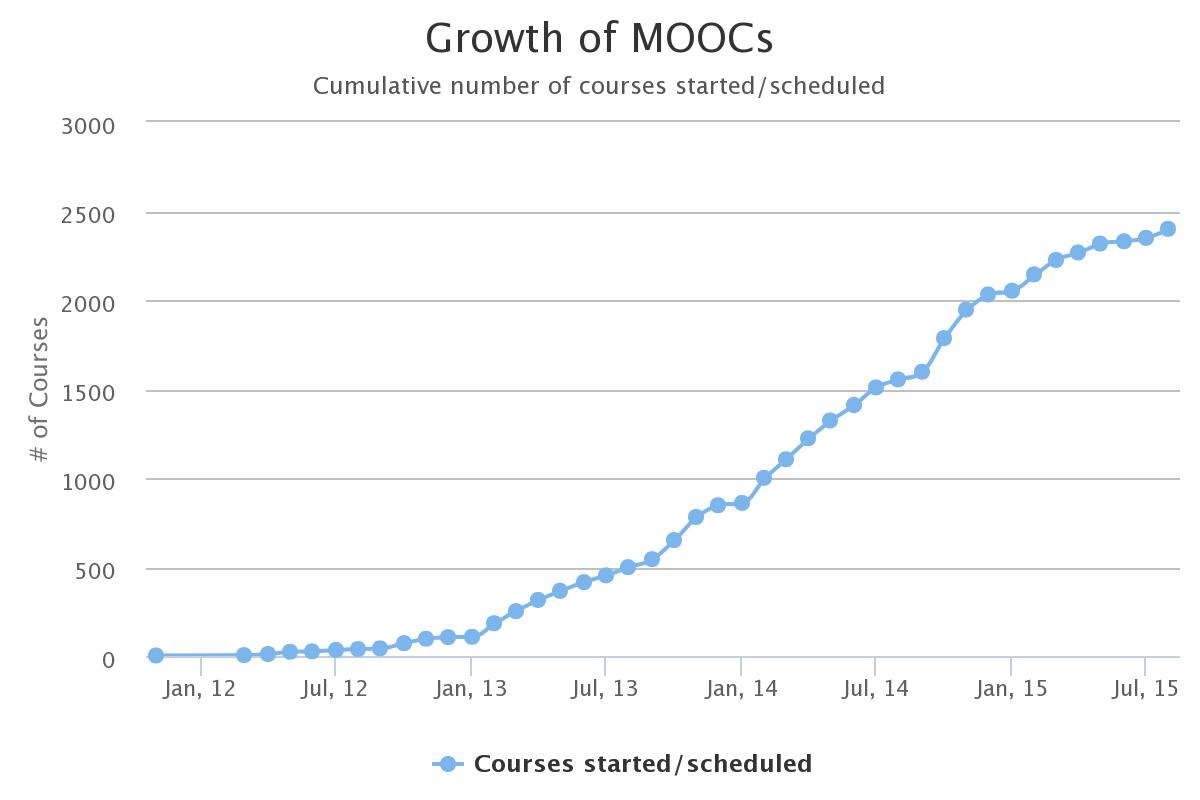In the past, AMT-Lab has published pieces such as “What’s A MOOC?” and “MOOC for Arts Managers.” This article continues to examine this trend while looking specifically at the state of arts education in MOOCs.
What are MOOCs?
Let’s first take a quick review of what MOOCs are. MOOCs, or Massive Open Online Courses, are a mechanism of online education that is emerging around the globe. MOOCs first appeared as a mode of online education in 2008. They are usually open-ended courses, with no limits of participation and are typically free via the web. MOOCs break through the geographical limits of traditional education to let students in remote areas get access to popular courses taught in top universities. According to the New York Times, 2012 became “The Year of the MOOC,” as major MOOC providers emerged, including Coursera, EdX and Udacity. These providers partner with leading universities and offer courses online on their educational platform.
MOOCs Today
Statistics from Class Central estimated that by November 2015, over 35 MOOC providers would have partnerships with 550 universities around the world to offer more than 4000 courses. This prediction seems to be holding up; among the top 25 universities in the US News rankings, 23 of them now offer online courses for free.
Coursera is the largest MOOC provider today. As the organization says on its website, it has partnerships with 136 universities around the world and offers 1472 courses to more than 16 million students in over 200 countries. The subjects of these courses range from physics and engineering to humanities and business.
Arts Education and MOOCs
While MOOCs are developing fast, arts education courses on various platforms seem to get left behind. According to data from Class Central, the majority of courses are offered under the subjects of Computer Science, Engineering, and Mathematics or Business. “Art and Design” is the subject that has the least courses, accounting for only 4.5% of all courses.
Source: edSurge
On Coursera, Music and Art is a sub-category under Arts and Humanities, while science fields such as Computer Science, Data Science, and Math and Logic are major categories. Only 73 Music and Art courses are provided while 385 courses are available under the subject of Computer Science.
Other than the number of courses, the disparate popularity between art and other subjects is further evidence that arts education less prevalent in MOOCs. On the list of “Most Popular Courses in 2014,” there are four business courses and three computer science courses, but no arts courses.
Furthermore, the arts courses on Coursera are less advanced than their STEM peers. In the sub-discipline of Music and Art, most of the courses are introductory courses, such as “Fundamentals of Graphic Design,” “Introduction to Guitar,” or “Understanding Video Games.” On the contrary, in the sub-discipline of Software Development there are both introductory and advanced courses, such as “Fundamentals of Computing” and “Advanced Data Structures in Java.”
What are the reasons for these differences? What can MOOC providers do to enhance their art courses? What can they do to create a more interactive learning environment to art learners? Please share your thoughts in the comment below.



